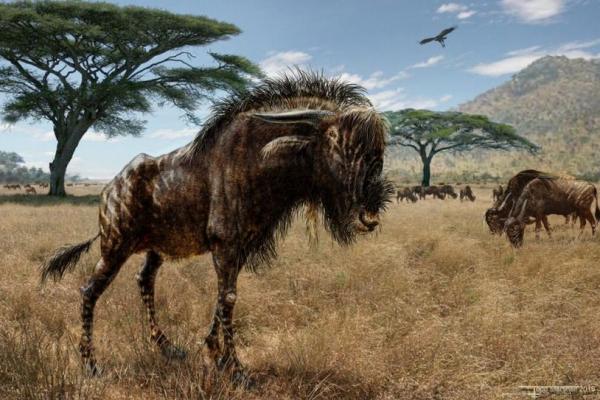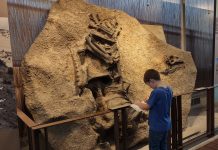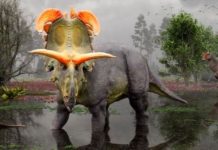
WACO, Texas, Feb. 7 (UPI) — The analysis of several fossilized skulls of Rusingoryx atopocranion, recently discovered on Kenya’s Rusinga Island, suggests the extinct wildebeest-like animal possessed a nose similar to the hadrosaur dinosaurs of the Cretaceous period.
“The thing that’s really remarkable is that lambeosaurine hadrosaurs are the only other animals that we know of that have a similar feature,” Daniel Peppe, an associate professor of geology at Baylor University, said in a news release.
Peppe is serving as co-director of the excavation work in Kenya
“This is a fantastic example of convergent evolution, which occurs when different animals end up evolving the same features independently,” Peppe added. “In this case, dinosaurs and bovids are obviously not closely related.”
Researchers believe both the wildebeest-like mammals and hadrosaurs gathered, traveled and ate in herds and experienced similar evolutionary pressures — resulting in remarkably similar nasal adaptations.
Their social structure demanded an ability to communicate, researchers say, and their unique nasal passages offered a solution. Their snouts could be likely be used to produce vocalizations similar to a vuvuzela or horn.
“There are probably very few ways for animals to evolve these features and that if or when they do, it will happen in a similar way,” Peppe said.
The newly unearthed fossils are also offering researchers a better understanding of the wildebeest-like animals migration patterns — patterns the earliest human relatives likely followed several thousand years later.
“In the late Pleistocene about 50,000 to 100,000 years ago, when Rusingoryx was alive, Lake Victoria was either much smaller in size or had completely dried up and was replaced by a large grassland that probably expanded northward from the Serengeti,” Peppe explained.
The absence of a land barrier allowed a mixing of animals who traditionally remained far north of south of the equator.
“Early modern humans were likely following the migrating animals, which may have allowed them to disperse across Africa and of Africa,” Peppe added.
The new research is published in the journal Current Biology.





